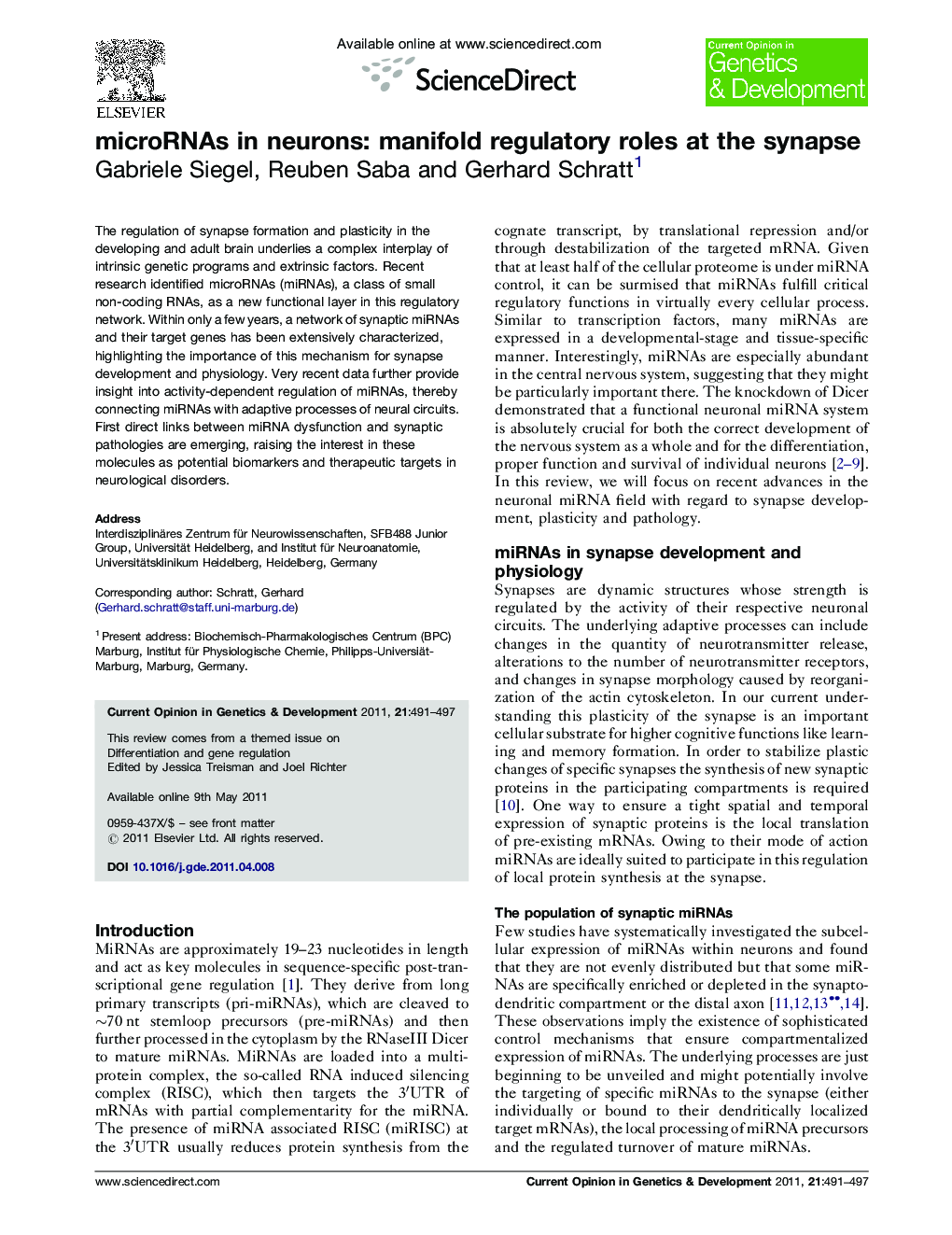| Article ID | Journal | Published Year | Pages | File Type |
|---|---|---|---|---|
| 2784983 | Current Opinion in Genetics & Development | 2011 | 7 Pages |
The regulation of synapse formation and plasticity in the developing and adult brain underlies a complex interplay of intrinsic genetic programs and extrinsic factors. Recent research identified microRNAs (miRNAs), a class of small non-coding RNAs, as a new functional layer in this regulatory network. Within only a few years, a network of synaptic miRNAs and their target genes has been extensively characterized, highlighting the importance of this mechanism for synapse development and physiology. Very recent data further provide insight into activity-dependent regulation of miRNAs, thereby connecting miRNAs with adaptive processes of neural circuits. First direct links between miRNA dysfunction and synaptic pathologies are emerging, raising the interest in these molecules as potential biomarkers and therapeutic targets in neurological disorders.
► miRNAs are particularly plentiful in neurons, where they fulfill important roles in the development and plasticity of neural circuits. ► A subset of synaptic microRNAs controls the morphogenesis of dendrites and spines by regulating the local synthesis of important synaptic proteins. ► microRNA expression and function itself is subject to a plethora of activity-dependent regulatory mechanisms. ► First examples of a physiological role of microRNAs in learning and memory in both invertebrate and vertebrate model organisms are emerging. ► Deregulated microRNA expression might contribute to neurodevelopmental and neuropsychiatric disorders, thereby representing a novel target for therapeutic intervention.
